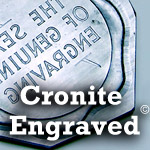Fume Scrubber
For Ferric Chloride And Chrome Plating Acid Fumes
The Fume Scrubber usually works in conjunction with either the exhaust of an etching machine or chrome plating system. The fumes of these acids are simply suspended droplets of contaminated vapor and are re-solubilized when passed through a liquid rich environment.
The exhaust fumes are either blown from the etcher or plater at the bottom end of the scrubber, or they may be sucked up by a blower fitted at the top end of the scrubber. As air is introduced into the bottom of the scrubber, it passes up through and around many specially shaped plastic pieces so that the air cannot go in a straight line, but must contact a wet surface.
Water Recirculator
The water within the scrubber recirculates because the pump sprays a fine mist of liquid at the top of the scrubber. This mist permeates down (as the exhaust air goes up) and coats the many particles of plastic before it returns to the sump at the bottom.
Spray pressure can be regulated for the optimum situation. Additionally, there is a mist eliminator at the top of the scrubber which prevents water droplets from going out the exhaust.
The recirculated water is often put through an ion exchange filter when working in conjunction with a chrome plating system. The ion exchange filter removes all of the chrome particulates from the water, thereby purifying the system. When the Fume Scrubber is installed in conjunction with a ferric chloride etching machine, a neutralizer and evaporator are often used to handle the hazardous waste liquid.
Scrubber Efficiency
The Fume Scrubber is 99.9% efficient in removing the gaseous contaminates in either a ferric chloride or chromic acid environment. Air quality requirements of certain municipalities make the Exhaust Fume Scrubber a requirement so as to pretreat the air prior to discharge.
In areas such as California, it is a requirement and a “major violation” by OSHA (up to a $5,000.00 fine and susceptible to immediate shut down). Please check your local regulations, not only for hazardous waste discharge, but also any exhaust air discharge.
It requires 220 Volts, single phase electricity. Water must be added to this system, but it does not need to be hooked-up to a fresh water system.


